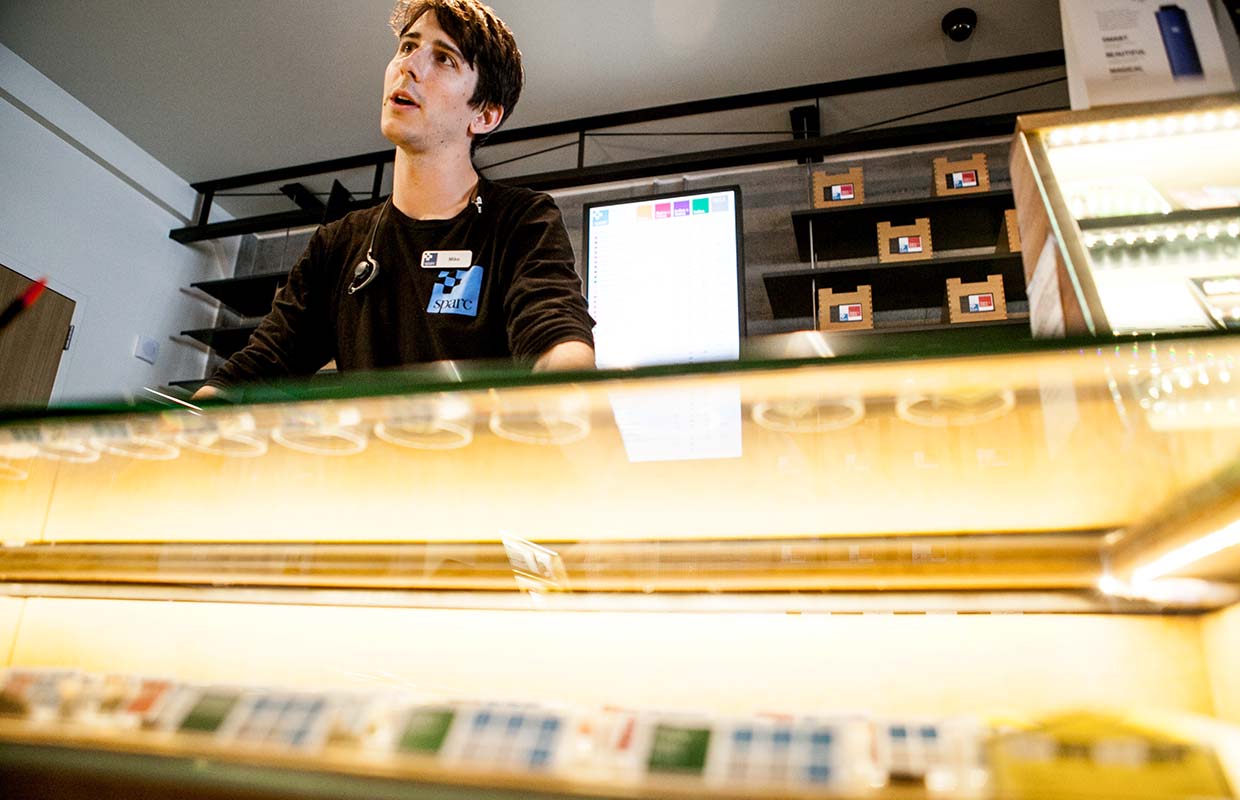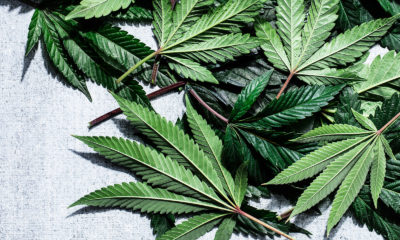
Cannabis
Beyond Budtenders
Dispensaries and patients alike could benefit from the growing community of medical professionals who are solely focused on the medical utility of cannabis.
In the classic 19th Century novel “Uncle Tom’s Cabin,” Topsy is a wild and wise slave girl who declares, “I ‘spect I grow’d. Don’t think nobody ever made me.” This led to a colloquialism, “Grow like Topsy,” and, for this author at least, that describes the iconic medical cannabis dispensary.
Dispensaries in the late 1990s emerged from the culture of prohibition with no guidance and had the distinct look of hippie head shops with parachutes hung from the ceilings and pungent aromas from the “medicine” in display cases and in use by the patients.
Today, for the most part, all that has changed, given way to more modern Apple-store-style establishments that are decidedly calmer and more business-like. Smoking cannabis on the premises is verboten. Indeed, “smoking” marijuana at all seems to be going the way of the 1996 dispensary. Today’s preferred delivery systems include vape pens and vaporizers, tinctures, patches, salves, edibles and more. And just as the choices have become more complex, so have the patients.
Medical cannabis patients are increasingly older and often cannabis naive. Many are drawn to cannabis because nothing else is controlling their chronic pain, diabetes, fibromyalgia or arthritis, curing their cancer, or stopping the horrible symptoms of Crohn’s Disease or other digestive illnesses. Cannabis, now known to be a principle player in the body’s delicate balancing process called homeostasis, may well help with all of these conditions but the complexity of these illnesses requires constant care and medical attention. Yet too often these patients receive their “recommendation” from a doctor and, armed with a medical card and dozens of questions, they travel to a dispensary where they meet the budtenders who know their product (and their issue) but they don’t know medicine or physiology – and that’s where the problem begins.
Budtenders can tell you all about sativa, indica, edibles and dabs. They can help you understand the plant behind the cute names like AC/DC or OMG Kush. But they can’t, or perhaps it is better to say they should not, give medical advice. Yet they do so all the time. It is their job description as illustrated by a recent ad in the San Francisco area Craigslist employment section. Mixed among the ads for line cooks, office managers and hair stylists was an ad for “Budtender in Medical Cannabis Dispensary,” which began, “Have you dreamed of sharing your knowledge of the healing power of cannabis?” It goes on to say that applicants must possess a “good knowledge of medical cannabis’ uses.”
It is not this author’s intent to disrespect budtenders. Their knowledge about the product is often phenomenal, but recommending a certain strain for, let’s say, insomnia becomes more complex when the patient seeking a good night’s sleep also has Type II diabetes with lower extremity neuropathy and hypertension. Such a patient may already be on five or six conventional pharmaceuticals (including sleeping pills). This is called “polypharmacy” and is one of the greatest prescribing challenges in general practice.
The beauty of cannabis is that it can often help patients reduce polypharmacy and there is a growing community of medical professionals who are solely focused on the medical utility of cannabis and helping patients achieve homeostasis.
There are numerous associations that are educating medical professionals, offering classes with continuing education credit. These include the Society for Cannabis Clinicians and American Cannabis Nurses Association. A short-lived association for pharmacists fell victim to the green rush as its organizers squabbled over ownership and profits – but in general pharmacists are undeniably interested in medical cannabis. In April 2014, a panel at the American Society of Health-System Pharmacists “Midyear Clinical Meeting” gave an excellent overview of the issue and one of the speakers counseled pharmacists to “ask themselves how they can foster an environment in which patients feel safe and comfortable discussing medical marijuana.”
A growing number of cannabis-specific medical clinics are open and staffed with doctors and nurses who will meet with patients in a traditional fashion, take a complete medical history and tailor a cannabis regimen that “plays well” with other medications the patient may be using.
But in order to obtain supplies, patients still must go to a dispensary or, in some U.S. states, they can actually call a manufacturer/grower and have supplies delivered. All too often budtenders or manufacturers will contradict the recommendation of the doctor or nurse when it comes to the product needed by the patient. Why? Unfortunately, it often comes down to supply and demand. Just like associates in a big box store, the budtender is in a position to steer the customer in another direction to make the sale. All too often the emphasis is on higher THC content, an artifact of the recreational cannabis world. For the medical cannabis patient, however, it has been discovered that less is often better than more. “Start low and go slow” is the mantra of all medical cannabis professionals.
Another problem is “samples.” It is unlikely a patient would ever obtain free drug samples at a pharmacy and even physicians are more reticent about giving away free drug samples anymore. Yet dispensaries often have “free” samples, usually edibles. Eloise Theisen, an Advanced Registered Nurse Practitioner (ARNP) who owns Green Health Consultants in Lafayette, California, is frustrated with the problem.
“These ‘free samples’ can be high in delta-9 THC content, not to mention sugar,” she says. “Some of my patients are diabetics who obviously should avoid cannabis edibles.”
Another problem with ingesting cannabis is that THC is processed through the liver, which can be a serious problem for patients with liver disease or dysfunction. And Theisen notes, “THC and CBD can actually accentuate the action of regular pharmaceuticals that my patients must use in addition to cannabis, yet I find very few budtenders or dispensary owners who are aware of this potential problem.”
Dr. Jeff Hergenrather, president of the Society of Cannabis Clinicians (SCC), would love to see physicians playing a more prominent role in cannabis distribution but notes that federal law and various court decisions have created an environment that makes it impossible for physicians to actively ally themselves with dispensaries.
Says Hergenrather, “Until cannabis is removed from Schedule I of the Controlled Substance Act, the nurses will be the health professionals to work with patients at the source of cannabis and cannabinoid medicines – the dispensary.”
So, for manufacturers and dispensary owners who are serious about medical cannabis and truly care about their clients, the time has come to consider a new staff position: a nurse. Or, at the least, have a nurse on retainer and available for consult. This is not to say that every customer who enters the dispensary must be seen by a medical professional. Most medical cannabis patients are capable of handling their own medication. But for those patients with multiple ailments, referred to as “co-morbidities” in the medical world, a nurse on staff can be an invaluable tool. These nurses will not only help patients, they can also educate the dispensary budtenders to better serve patients. And having a nurse on staff can help immensely with building a steady clientele that returns to a dispensary because the level of care is more in tune with their often complicated medical disorders.
While some worry about “creeping medicalization” and view the entry of trained healthcare professionals as an unnecessary intrusion, the facts are simple: medical cannabis is here to stay and Big Pharma is definitely interested. These companies will do all that they can to quash the dispensaries and move cannabis into a new regulatory scheme, enslaving the plant just like poor little Topsy was enslaved. Dispensaries can stop this intrusion by acknowledging the need for professionals and making room for them in the medical cannabis tent. It is the old adage: take control or control will be taken.
Originally published in Issue 20 of Cannabis Now. LEARN MORE
TELL US, do you talk to your medical provider about cannabis?




















